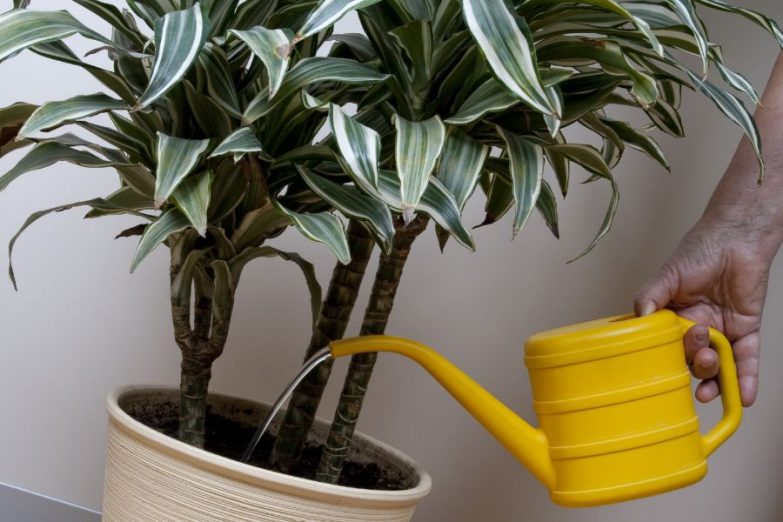We all make mistakes. Unfortunately, overwatering is one that can cause yellow leaves, stunting and other plant problems. It may even call forth the deadly disease of root rot. It’s important to know the signs of overwatering, how to prevent it, and how to fix an overwatered plant if it happens.
Steps to fix an overwatered plant:
- Stop watering your plant temporarily and improve drainage.
- Identify and treat root rot immediately.
- Consider changing the pot and soil to promote better drainage and faster soil drying.
- Provide increased ventilation and temperatures, and lower humidity.
The Dangers Of Overwatering
Overwatering is the number one cause of death for container plants. Some specimens will shrug off desert conditions, poor soil, low light, and trampled neglect only to call it quits after an overdose of water. It doesn’t seem fair.
Watering is how beginners show their love, and it’s wrong? The contradiction is confusing until you understand what’s going on.
Overwatering is harmful to a plant in two ways:
Overwatering Drowns The Roots
One of the primary root functions is gas exchange: they need to draw oxygen from their soil. A flooded mix drowns the roots and suffocates the plant.
Overwatering Sets Up Infection
By blocking oxygen from the root zone, overwatering creates an anaerobic environment in which disease pathogens grow and thrive.
Correct watering in well-draining soil leaves the mix damp enough for plants to obtain moisture and nutrients while providing sufficient aeration for the root system to breathe.
Short-term soaking (5-10 minutes) doesn’t harm the plant as long as the soil is immediately and thoroughly drained.
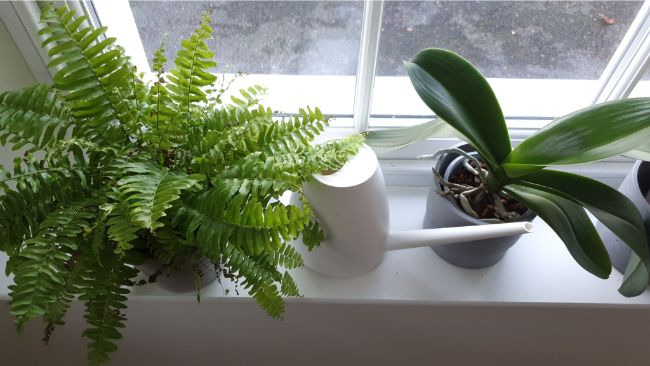
How To Tell If Your Plant Is Overwatered?
An overwatered plant can look like an underwatered one, and it’s very important to know the difference. One more false move with your watering can could spell disaster.
Check the soil and review the plant’s recent watering schedule. Always make sure the soil has properly dried before rewatering.
Besides soggy soil, here are symptoms of an overwatered plant:
- Wilting. This is a common sign of underwatering, but plants that have their nutrient flow shut down by overwatering can wilt, too.
- Soft or puffy leaves and stems. The foliage of an underwatered plant becomes dry and crispy.
- Leaves turning a lighter green color.
- Yellowing or brown foliage.
- The dropping of both old and new leaves.
- Brown spots on leaves and leaf tips.
- Leaf edema. This looks like blisters and is caused by excess water in plant cells. It can lead to pitting.
- Slow growth and stunting.
- Fungus or mold growing on leaves, soil, and stems.
- The presence of powdery mildew, soil gnats, or other moisture-loving pests.
Overwatering: Causes And Prevention
No one wants to drown their plants. It’s much better to prevent overwatering than have to fix an overwatered plant in the first place. Understanding the reasons for overwatering helps you take steps to prevent it.
Watering Too Often
This is the most obvious reason for overwatering. It can take experience to realize that too much water is worse than too little and that it’s not the solution to every plant malady.
Overwatering is not just a beginner’s mistake. It can easily happen when caring for a group of houseplants together. Plants have individual water needs: what makes your Peace Lily happy will drown a succulent. You can’t water by preset schedule, either. The rule is to always check the soil before rewatering.
Poorly Draining Soil
The main contributor to overwatering is poor drainage. This causes water to pool around the roots. It’s not necessarily the quantity of water a plant receives; it’s how long the soil stays excessively wet.
Note that a well-draining mix with a lot of organic material can become compacted over time as the additives decompose. Inert, non-decaying media like pumice, perlite, or coarse sand are essential additions if you don’t replace the soil often. Here are some excellent potting mixes for houseplants. You can also read my article about making houseplant soil for more info.
Plant Type
Different species vary in how much water they need, so you have to learn the needs of your individual plants. If you put all your houseplants on the same watering schedule you’ll risk overwatering some of them. Each plant should be individually monitored.
Incidentally, the difference between plants is usually not in how they are watered: saturating the soil is usually correct. The important difference is in their ideal soil composition and how dry the mix should get between sessions.
For example, a cactus’ soil should be as deeply soaked when watered as a thirsty fern; the difference is that a succulent’s soil should very drain quickly and be allowed to become much drier between rewettings.
Temperature
Water evaporates more quickly in warmer conditions and vice versa. If you water on a schedule based on warm temperatures, you can easily overdo it in cooler weather.
Container Size
Larger pots take in more water and are slower to dry out. One common scenario for overwatering is to continue the same frequency after repotting into a larger container. Soil that took a week to dry in a small pot takes longer to reach that point in a larger container.
Pot Material
A terracotta pot is the most forgiving container for watering: the material is porous enough to allow moisture to escape and the soil to breathe. A glazed or plastic container effectively seals moisture inside and slows down evaporation.
Always make sure your plant is in a pot with at least one drainage hole. Repot if necessary. If you’re worried about runoff or just want a more decorative look, put the pot with drainage holes on pebbles inside a larger sealed container.
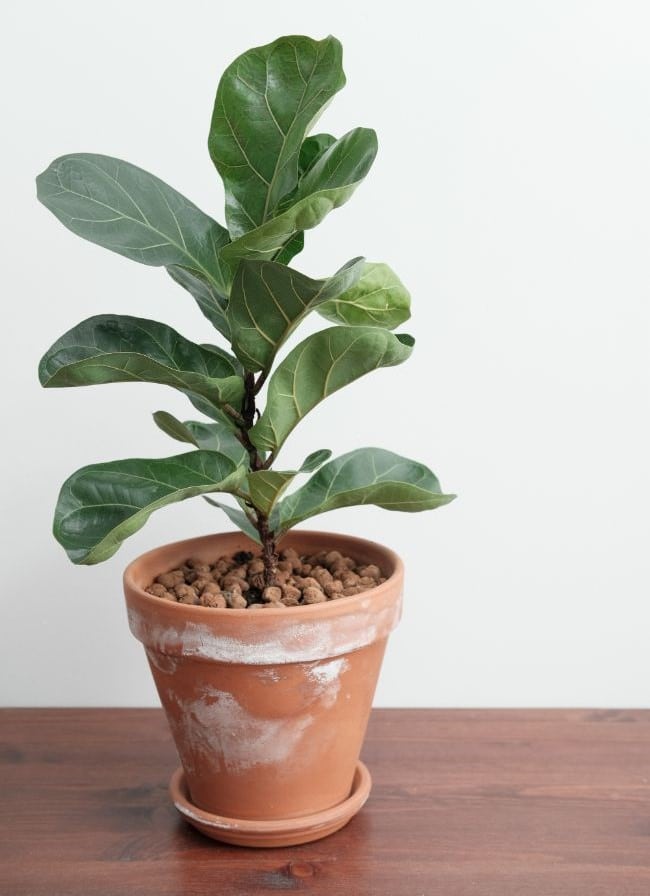
Wind
If you move a potted plant outdoors, be aware that wind will make the soil dry out more quickly. Conversely, if you base a watering schedule on blustery conditions, it’s easy to overwater when the wind dies down.
Dormancy
Many plants go into regular cycles of dormancy when they don’t need as much water. This usually – but not always – conforms to a cool-weather slowdown. Learn about your plant’s cycles and be ready to cut back when it shows signs of going dormant.
Humidity
Moisture in the air slows down soil evaporation and throws a variable into watering frequency. Whether the air’s moisture comes from water-filled trays, drip caches, humidifiers, or just shower steam in a bathroom, high humidity and zealous watering can be a dangerous combination.
Is It Possible To Fix An Overwatered Plant And How Long Does It Take?
Most plants can overcome overwatering damage and return to health, but a full recovery depends on three things:
Plant Resilience
A hardy plant can bounce back from soggy conditions a more delicate specimen will succumb to. Most houseplants can make a full recovery, but some won’t ever be the same.
Amount Of Damage
The amount of damage and speed of detection is crucial to determining whether you can fix an overwatered plant. A plant may languish if the soil stayed too wet for a long period, or you may need to cut away so much infected material that it will take a long time to regrow.
Treatment And Aftercare
Taking the proper steps to fix an overwatered plant without delay and giving the plant good care afterwards greatly increases the outlook for a full recovery.
The speed of recovery also varies by species. Faster-growing plants will naturally rebound more quickly than slow-growers. Some shrub-like plants may take years to assume their former dimensions, whereas an energetic tropical may replace its growth over a single warm season.
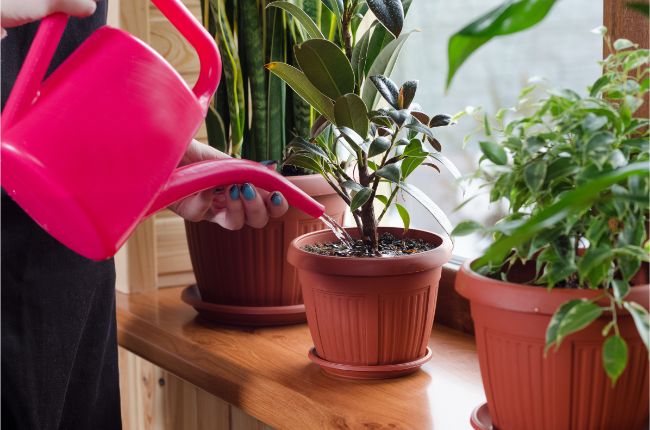
How To Fix An Overwatered Plant
If you suspect you’ve over-served your green friend, the first thing to do is stop watering.
As a rule, you should let the topsoil dry between soakings. The guideline for many plants is to allow the top two inches of soil to dry out first. Letting the top half of the pot become dry is better for most succulents. Even the majority of moisture-loving plants don’t want sodden soil and benefit from a (short) spell of dry topsoil to discourage gnats and fungal issues.
One convenient method to determine whether it’s time to rewater is to pick up the pot and feel if it’s heavy with moisture. With a little practice, you can quickly tell if the plant needs water. A more direct approach is to insert your finger, a chopstick, or moisture meter into the soil. I cover more ways to tell if your plant needs watered in this article.
Remember not to overdo the drying-out period – that will only add to the plant’s stress.
Treating Mild Or Suspected Overwatering
If you notice the soil is too soggy or otherwise conclude you’ve overwatered before seeing visible signs of damage, you may be in luck. Simply letting the soil dry out appropriately could be enough to avoid trouble.
Here are steps to fix the situation:
- If there’s standing water on the soil, tilt the pot to drain it away.
- Make sure the pot is elevated so it can drain fully.
- Empty the cache tray if there’s any water inside, and recheck in case it refills.
- Give the plant good light to stimulate it to use more moisture – though not greater than it’s normal preferred exposure. Note: If a plant is showing signs of distress, it’s better to take it out of bright light, so use your discretion.
- Hold the fertilizer until normal conditions return. The plant could be stressed even if it hasn’t given visible signs, and fertilizer might complicate it’s recovery.
- Provide more warmth to the area to increase evaporation. Just a few degrees is enough: don’t overheat the plant.
- Increase air circulation to speed soil drying. You don’t want to put the plant in a draft, but it might be helpful to give it more airspace or hang it in an airy room.
- Lower the ambient humidity. If you’re using water trays or a humidifier, consider stopping until the plant is out of the danger zone. You can move the wet plant to a drier area if it’s with others you don’t wish to disturb.
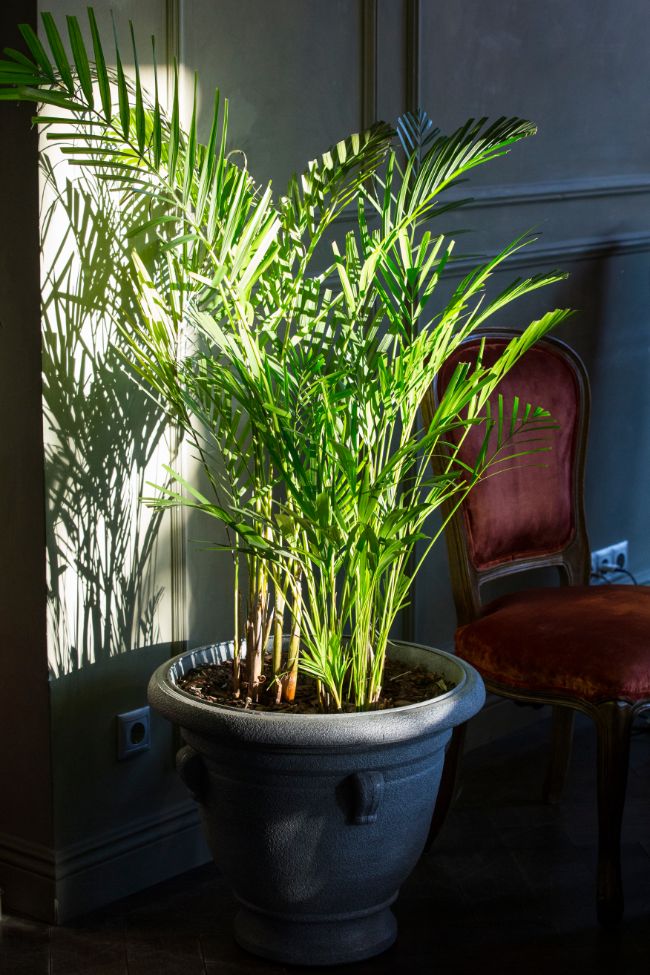
Treating A Plant With Signs Of Overwatering Stress
If your plant is showing leaf yellowing, brown tips, or other signs of stress related to overwatering, it means the situation has progressed. After ruling out root rot, which requires more invasive action, there are a few extra steps that can help fix the problem.
This may seem unintuitive, but move the plant out of strong light. Don’t put it in the dark, just out of direct sun or very bright light. Intense light can further stress the plant. The leaves of an overwatered plant often struggle for water and are vulnerable to drying in bright conditions.
- Remove some foliage from the top of the plant, along with any buds, flowers, and fruit. This conserves energy for the plant’s recovery.
- Avoid fertilization until the plant shows new growth.
- Aerate heavy, soggy soil by carefully poking a few holes with a chopstick or pencil. This opens more air space to speed drying, but don’t overdo it and damage the roots.
- Wick the soil. If the potting mix is very wet, take it out of its container in one piece and place it on a layer of newspaper or other dry, absorbent material. This will gently pull water from the root ball; replace the material as needed.
- It may be tempting, but don’t try to squeeze water from the soil ball. Squeezing can damage the delicate roots – the last thing the poor plant needs. You can leave the root ball out of its pot for several hours if necessary, but don’t let it dry out completely.
- Increase air flow by putting the exposed soil ball on a rack to dry out. A fan can be helpful. Don’t blow a heavy draft directly on the plant, just use it to increase the room’s air flow.
- A dehumidifier can be effective. Use a Peltier model, not a desiccating type. Set the potted plant nearby and keep it under observation: you don’t want the soil to become bone dry!
- Refresh the soil. If your overwatering issue is related to lack of drainage, you can amend the soil with aerating materials like perlite, pumice, and coarse sand.
Gently remove the plant and wipe away any old soil that contains few roots. Avoid damaging the already stressed root system: don’t just shake the dirt off. Plant the root ball in the new mix. You can also stir dry amendments into the topsoil.
Once the plant has recovered, do a full repotting into a better-draining mix.
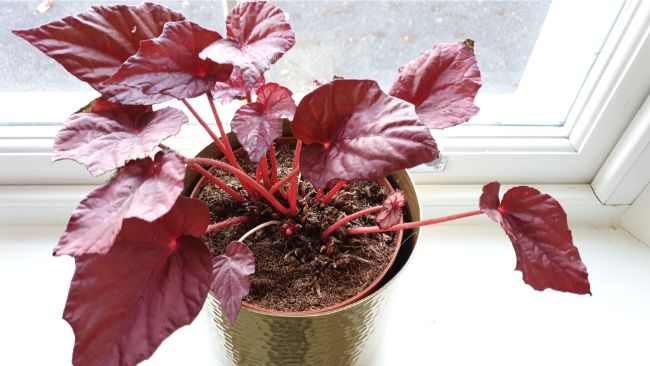
Nature’s Nightmare: Root Rot
If you’re wondering if it’s worthwhile the bother to fix an overwatered plant, root rot is here to scare you. It can quickly render your beloved plant into a pile of stinky mush. If you don’t address this condition in time you won’t have a plant to worry about.
With prompt treatment, however, many plants can recover, and we’ll highlight the steps to diagnose and (hopefully) cure the disease.
For more information, please check out my article about how to identify, fix and prevent root rot.
Does My Plant Have Root Rot?
The diseases that cause decay and root rot are everywhere. The question is whether you’ve provided the wet, anaerobic conditions they grow in for long enough that your plant is infected.
The way to check is to gently take the plant from its pot and look at the roots. Healthy roots are white and firm; infected roots are brown or black, mushy, and have a foul odor of decay.
The disease kills from the roots up: if the disease has progressed you may also see puffy, swollen stems. If it’s advanced to the terminal phase, the stem can come off in your hand. In that case, discard it safely.
Letting the soil dry out is probably not enough: you need to trim away the dead and dying parts, and repot in fresh, dry soil. These drastic actions are the best chance your plant has to survive.
An Overview Of Treating Root Rot
- Wipe or wash off any moldy soil you see, taking care not to break healthy roots.
- Cut away decaying brown or black roots, leaving only the healthy white portions. Also trim any yellowing or damaged leaves.
- Cut off top growth in proportion to the amount of roots you had to remove – the remaining roots won’t be able to service the entire plant.
- Sterilize your cutting tools before and after. Also, sterilize the old container before reuse by soaking in nine parts water to one part household bleach for at least 10 minutes. Wash afterwards with dish detergent.
- Rinse infected soil off the roots and repot in a new or sterilized container with fresh, dry soil. Some growers mix cinnamon into the soil as a gentle anti-fungicide.
- Water and drain well, and place the pot in a bright spot with suitable light. You may wish to add chamomile tea to the water: some consider it to be a natural weapon against fungal infections.
- Resume watering carefully. Remember that the plant will need less water than before, since it has fewer roots.

